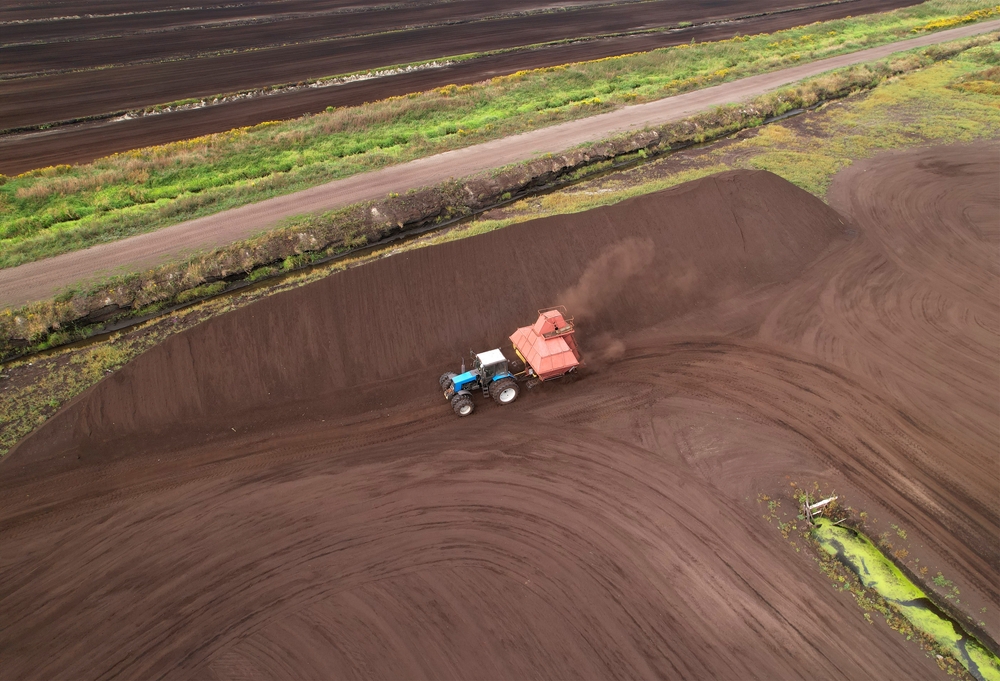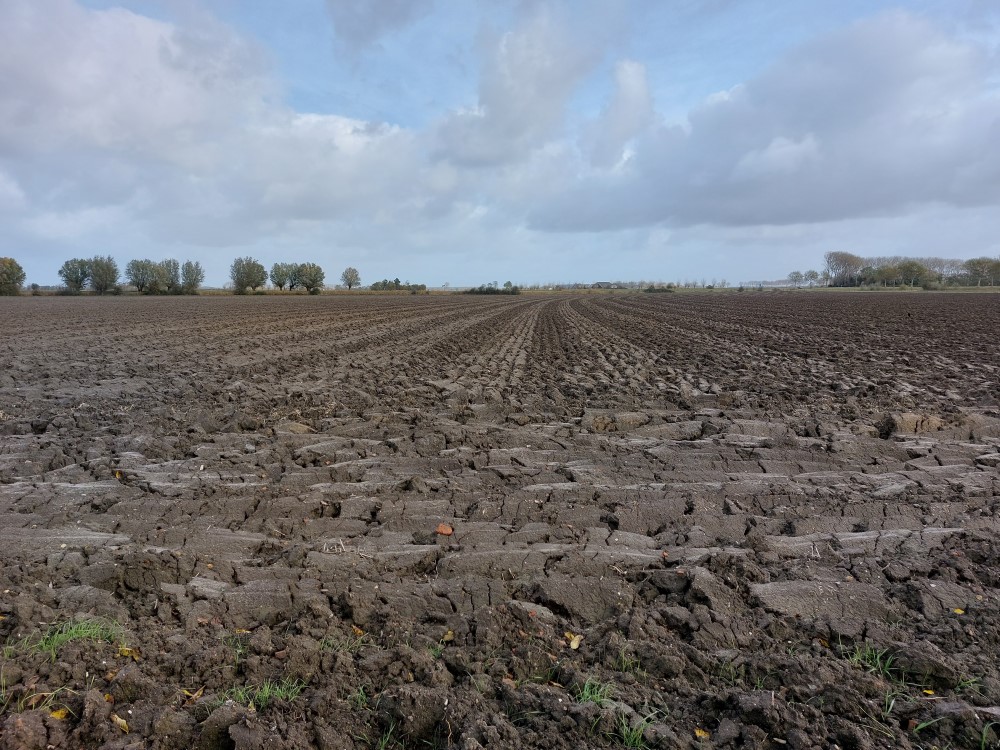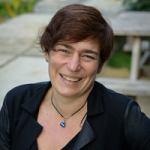Our soil: the basis of life
This article has been written by Saskia Visser, with contributions from Janjo de Haan, Jennie van der Kolk, Dorothee Tol-Leenders and Rudi Hessel.
We expect a great deal from our soils. And, as we have previously explained, rightly so: soils that are treated well and managed properly can make an enormous contribution to all the Sustainable Development Goals. The Netherlands has therefore set itself the target of ensuring that all agricultural soils are sustainably managed by 2030. In addition, the expectation is that Dutch agricultural soils will sequester a minimum of 0.5 million tonnes of CO2 a year from 2030 while Dutch peat soils will emit one Mt a year less.
Fine ambitions indeed, but realising them will require a great deal of knowledge to be developed. This is the reason why large-scale soil programmes have been set up, with Wageningen Research playing its part in several, including the Basic Soil Register and the Soil Map of the Netherlands. We are also researching the impact of soil on the climate in the Smart Land Use project (text in Dutch) and a national research programme into greenhouse gases in Veenweiden landscapes (NOBV, in Dutch). We are examining how best to sustainably look after all types of soil within a Dutch PPP called Better Soil Management, and are studying the effect circular agriculture has on soil within our research programme ‘Towards a circular and climate-positive society’. But what have we discovered so far? How are all these programmes connected? And how can the knowledge gained be applied in practice? Here’s our summary of the current-state-of-play on the know-how gained by Wageningen Research over the past year in relation to Dutch agricultural soils.
Soil information
If soil is the foundation on which we live, accurate information is essential. Which type of soil am I dealing with? Where is peat found? How does groundwater move through the soil? Is the soil suitable for arable farming or better used as grassland? And if so, why? Dutch readers can find many answers to such questions free of charge via the website www.bodemdata.nl. Recently upgraded ahead of a relaunch in November 2021, the portal contains everything from soil boring characteristics of all the measurements made, soil maps and the geomorphic map to interesting thematic maps such as those showing peat thickness and the suitability of soils for arable farming.
Within the framework of the Basic Soil Register Act, the soil and geomorphic maps for the Gelderse Valley region were updated in 2020 and 2021. These new maps provide up-to-date information for various purposes, including climate-proofing the town of Ede. We made the details accessible in the form of a story map which describes how information about the soil can support a redesign for the area and new policies to prevent flooding.
Help, the ground is sinking!
In the past, areas with peaty soils were drained in order to make agriculture viable. Extracting the water exposed the soil to the air (oxygen) and caused the peat to disappear, which in turn led to land levels falling and CO2 being released into the atmosphere. As these practices continued, the groundwater levels were regularly lowered. This process was ongoing for centuries in peatland areas and led to large swathes of the west of the Netherlands sinking below sea level. By the middle of the twentieth century the subsidence was accelerating even faster due to advances in drainage, resulting in major damage to roads and houses plus large quantities of greenhouse gas emissions. This is the background to the goal of reducing emissions from peat areas by one Mt a year from 2030.
The NOVB is studying the effectiveness of measures such as underwater drainage, pressure drainage, raised ditch levels and alternative cultivation against subsidence and greenhouse gas emissions. Measurements taken at a testing location show that pressure drains can have a significant effect on the hydrology of peat soils, making them less wet in the winter and less dry in the summer. Other measurements have indicated a reduction in ground level variations. While these are hopeful signs, the test runs are currently too short to fully quantify the true effects on subsidence and emissions.

We may of course be using our peatlands differently in the future, which is why researchers, stakeholders and experts from the peat colonies have come up with farm types that may contribute to a more climate-proof arable farming. These varieties have been subjected to economic calculations and estimates for their effects on greenhouse gas emissions. This allowed us to compare them on both these criteria as well as bring trade-offs to light. Details of which variety scored best with regard to climate & economy out of the energy farm, green/blue farm, circular farm, fibre farm, protein farm and internet farm have now been published in our report (Dutch only).
Can the soil contribute to achieving climate goals?
Like other sectors, agriculture has to contribute to the climate goals and is looking for ways to store carbon in agricultural soils. Thanks to model calculations and measurements in long-term experiments, we now know that the goal of 0.5 Mt CO2-eq per year is feasible from 2030. Although good to know, farmers must be willing to take extra measures to achieve this: we are aware that many measures reduce profits in the short term, making them less than appealing. This is exactly why it is worthwhile to establish a system that rewards farmers for investing in carbon storage in the soil.
Our Smart Land Use research programme defines the effectiveness of measures and calculates the related costs and benefits. In June 2021 we also launched an officially sanctioned method for the certification of carbon storage in mineral soils (clay, sand and loess) with permanent grassland. This enables the start-up of projects in which farmers can earn certificates by working on carbon storage in their grassland plots over the coming ten years. A certificate represents a verified emission reduction of 1 tonne CO2-eq. Parties that wish to invest in this voluntary carbon market can already purchase these certificates and groups of dairy farmers are also now exploring possibilities for working with them.
What does sustainable management involve?
The PPP Better Soil Management project is investigating measures that farmers can implement to contribute to sustainable soil management in 2030. It is a complex affair as the effects of measures are not always unilateral. The PPP has made an overview of the effects of the various measures on both soil quality and ecosystem services. This has taught us that non-inversion tillage on clay makes a positive contribution to water regulation and purification functions as well as the habitat for biodiversity. No unilateral effect was found on production (harvest). Non-inversion tillage on sand and peat soils does, however, have a positive effect on production and the recycling of nutrients, and no impact on water regulation and purification. All measures were assessed for applicability too. Although most soil-improving measures have a neutral to positive effect on ecosystem services, they are costly and demand investments in knowledge and mechanisation. These two animations summarise the results of reduced tillage and organic material.

Like other sectors, the agricultural sector has to contribute to the climate goals and is therefore looking for a solution in capturing carbon in agricultural soils. Photo: Saskia Visser.
To provide farmers with integrated soil advice, the PPP Better Soil Management programme has developed a Soil Quality Plan (BKP), which starts with an informal meeting between consultants and farmers in which all the necessary basic information is compiled. The plot is then analysed for its physical, chemical and organic soil quality, based on the BLN indicator set which was updated this year. Applying tools such as NDICEA (for the organic material and nitrogen dynamics) and NemaDecide (for nematode control), consultants then develop scenarios to improve the soil while taking into account the financial consequences. After discussions with the farmer, a multi-year plan for better soil quality is established. Pilots show that farmers appreciate the systematics and can actually contribute to better soil management. The process does still take a lot of time and considerable know-how is required to weigh up all the considerations, bottlenecks which would largely be overcome with more usable tools. More details are available in the BKP evaluation report and background documents.
What does a circular society demand from the soil?
In 2018, the Dutch Minister of Agriculture, Nature and Food Quality Carola Schouten outlined her vision in a presentation called Agriculture, nature and food: valuable and connected. Since then, the Netherlands has been transitioning toward circular agriculture. The fairly challenging goals for 2030 involve significantly reducing the use of artificial fertiliser and manure, storing nutrients from animal and human waste in the cycle more efficiently, and managing all agricultural soils sustainably with a focus on (soil) diversity.
As we expect many new organic fertilisers to be used, Wageningen University & Research has developed an evaluation framework which analyses various types of organic fertiliser for their capacity to actually deliver what they promise: improving soil quality, storing organic material in the soil, and determining whether or not the costs outweigh the benefits.
In addition, research is being performed into the various risks and solutions that the soil will encounter. We now know, for instance, that manure from chicken feathers makes the soil more resistant against nematodes in sugar beet production. We have also learned that antibiotic residues are retained in the soil longer than was initially thought.
Conclusion
We already knew that the soil is complex and our large-scale soil programmes are continually enhancing our understanding. That’s good news because the more we know about the soil, the better we can care for it. And a healthy soil is the foundation for a healthy society.
Read more
- Knowledge base programme Circular and climate neutral
- PPP Better Soil Management (text in Dutch)
- WUR contributes to the Dutch National Key Registry of the Subsurface, het WOT-programma BRO (text in Dutch), Slim Landgebruik (text in Dutch) and het Nationaal Onderzoeksprogramma Broeikasgassen Veenweiden (NOBV, text in Dutch)
- Join the discussion about this topic during Circular@WUR, 11-13 April 2022

